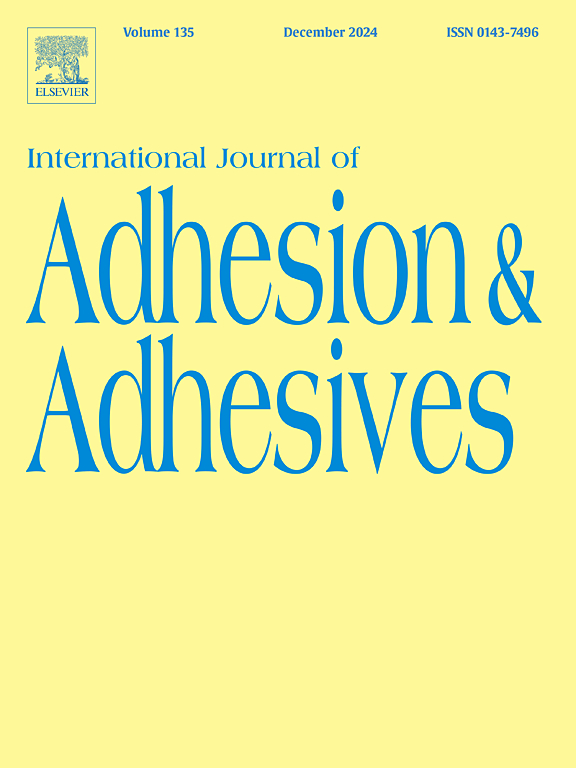Silver core-shells particles as antibacterial filler for adhesive resins
IF 3.2
3区 材料科学
Q2 ENGINEERING, CHEMICAL
International Journal of Adhesion and Adhesives
Pub Date : 2024-12-07
DOI:10.1016/j.ijadhadh.2024.103916
引用次数: 0
Abstract
Objectives
To evaluate the addition of Ag@SiO2 on the physicochemical and biological properties of an experimental adhesive resin.
Materials and methods
Ag@SiO2 particles were synthesized using a modified Stöber sol-gel process and added to a resin adhesive containing Bis-GMA (66.6 wt%) and HEMA (33.3 wt%). The particles were incorporated into the adhesive resin at 1 wt% (G1%), 2.5 wt% (G2.5 %), and 5 wt% (G5%) for the experimental groups. The unfilled adhesive base was used as a control (G0%). The adhesives were characterized by the degree of conversion, softening in solvent, ultimate tensile strength, microtensile bond strength, cytotoxicity, and antibacterial activity.
Results
The degree of conversion decreased for the 5 wt% Ag@SiO2 containing group when compared to the control (G0%) and 1 wt% (G1%) groups (p < 0.05). A decrease in Knoop microhardness was observed for all groups after immersion in solvent (p < 0.05). Ultimate tensile strength was not affected by particle addition (p > 0.05). The addition of Ag@SiO2 decreased bond strength (p < 0,05). All groups achieved over 90 % cell viability for SRB assay. Antimicrobial effects against S. mutans bacteria were observed, both in planktonic and biofilm environments (p < 0.05).
Conclusion
The adhesives added with 2.5 wt% Ag@SIO2 presented an adequate polymeric structure even though bond strength was affected. The addition of Ag@SiO2 in adhesives promoted antibacterial activity without cytotoxic side effects.

求助全文
约1分钟内获得全文
求助全文
来源期刊

International Journal of Adhesion and Adhesives
工程技术-材料科学:综合
CiteScore
6.90
自引率
8.80%
发文量
200
审稿时长
8.3 months
期刊介绍:
The International Journal of Adhesion and Adhesives draws together the many aspects of the science and technology of adhesive materials, from fundamental research and development work to industrial applications. Subject areas covered include: interfacial interactions, surface chemistry, methods of testing, accumulation of test data on physical and mechanical properties, environmental effects, new adhesive materials, sealants, design of bonded joints, and manufacturing technology.
 求助内容:
求助内容: 应助结果提醒方式:
应助结果提醒方式:


